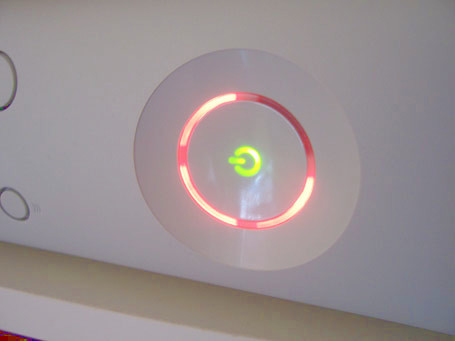 The Xbox 360 is a video game console designed and produced by Microsoft.
The Xbox 360 is a video game console designed and produced by Microsoft.Release and Key Developments
The Xbox 360 was officially unveiled to the public on MTV in May 2005, in a special programme with celebrity appearances and live music. How fancy is that?
The Xbox 360 was first released in the US and Canada on November 22nd 2005. Two variants were released, the Core, and Standard (which is often called Premium/Pro). Both models were released without HDMI output, and the Core was released with a wired controller rather than wireless like all other variants of the console. The Core also lacked a hard drive and had no storage included. The later release of the 360 Arcade on October 23rd 2007 replaced the Core consoles on shop shelves. The Arcade had a HDMI port, plus 256MB of system storage and a wireless controller. The Standard models were released with HDMI ports after 2007. The standard model had a 20 or 60 GB Hard Drive and a headset to differentiate from the Core model.
The Xbox 360 Elite was released in Autumn 2007 and had a matte black paint finish and a 120GB hard drive to provide an alternative in storage capacity.
Functions and Interface

The original user interface of the Xbox 360 was called the "Xbox 360 Dashboard" which implements a tabbed interface of browsing through content on the console (see image above). Users could launch games on DVD Disc or games stored on their console's hard-drive (if they had one). They could also change settings, browse the Xbox Live Marketplace and download films, games, trailers, game add-ons and many more things. There was also an achievement system which allowed users to make a profile and earn points when playing on games. These points could then be compared with friends over the Xbox Live online service, which provided networking between players from all over the globe.
The Xbox 360 Dashboard was replaced in November 2008 by the New Xbox Experience ("NXE") (See image below). The "NXE" changed the appearance of the 360 interface, and also introduced "avatars" which are characters that Xbox 360 users can customise to be a virtual representation of themselves when communicating and playing games over Xbox Live.

Connectivity
All Xbox 360 models currently in retail have HDMI ports, but only the Elite is bundled with a HDMI cable, which can be bought separately anyway. The Xbox 360 Standard/Pro/Premium has a Component/Composite cable which can output in High Definition. The Arcade is not bundled with an Ethernet cable as the other models are.
The Xbox 360 supports wired or wireless Xbox 360 controllers, which have been released in a multitude of colours. This controller can also be used on a PC or laptop. There is a headset which can be used for chat or online gaming, which is not included in the Arcade pack. Other accessories include specific game controllers, e.g. musical instruments, guitar, a steering wheel or dancemat. The Xbox 360 also supports a webcam called the Xbox Live Vision Camera, which can be used to communicate over Xbox Live in webchats or it can even be used in games. The casing of the Xbox 360 can even be customised with interchangeable faceplates, often given away with games or in most cases, purchasable separately.
Limitations
"The Red Ring of Death"
 The most obvious limitation is the reliability of the console. Technical problems are quite common and older consoles are more susceptible to failure. A test undertaken in February 2008, with 1040 consoles, estimated the failure rate at 16.4% (or one in six). 60% of these failures were general hardware failures. The most prominent problem is nicknamed "The Red Ring of Death" and when this failure occurs, three of the four lights around the power button flash red; this is a very clear indication that the console must be sent away for repair. Microsoft recognised the severity of this problem and extended the warranty of all consoles, but this only covers consoles affected by "The Red Ring of Death" issue and nothing else.
The most obvious limitation is the reliability of the console. Technical problems are quite common and older consoles are more susceptible to failure. A test undertaken in February 2008, with 1040 consoles, estimated the failure rate at 16.4% (or one in six). 60% of these failures were general hardware failures. The most prominent problem is nicknamed "The Red Ring of Death" and when this failure occurs, three of the four lights around the power button flash red; this is a very clear indication that the console must be sent away for repair. Microsoft recognised the severity of this problem and extended the warranty of all consoles, but this only covers consoles affected by "The Red Ring of Death" issue and nothing else.Another problem with the Xbox 360 is the disc capacity to play games. The console supports DVD, but not Blu-Ray like the other games console the PlayStation 3. Standard Dual Layer DVDs used to play games have 7GB of usable space for game content. Blu-Ray can store up to 50GB on a dual-layered disc. This may be a huge difference but game developers have yet to make the most of the extra capacity of Blu-Ray, and subsequently there is not much difference in the amount of game content being released in games for both consoles.
Craig Oatley ;D




No comments:
Post a Comment